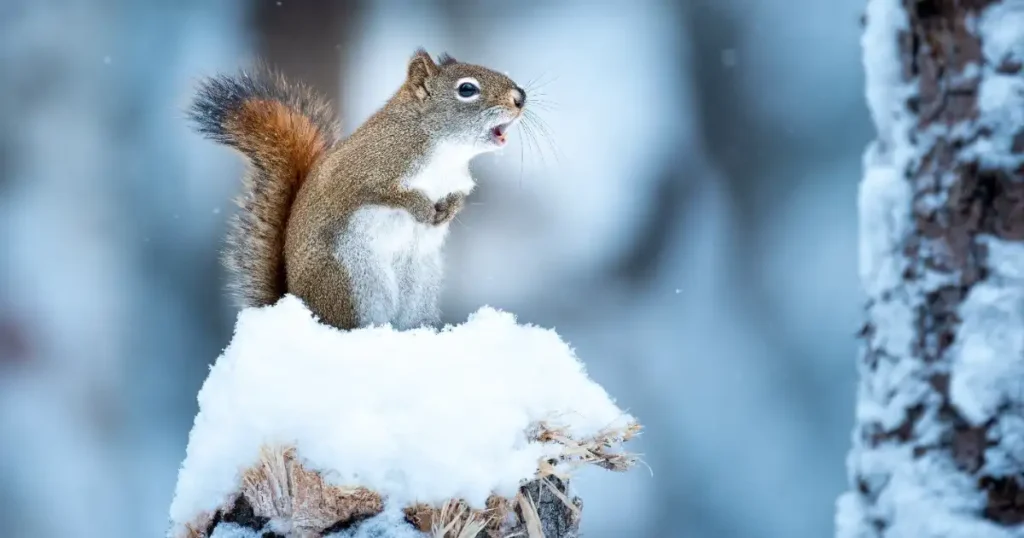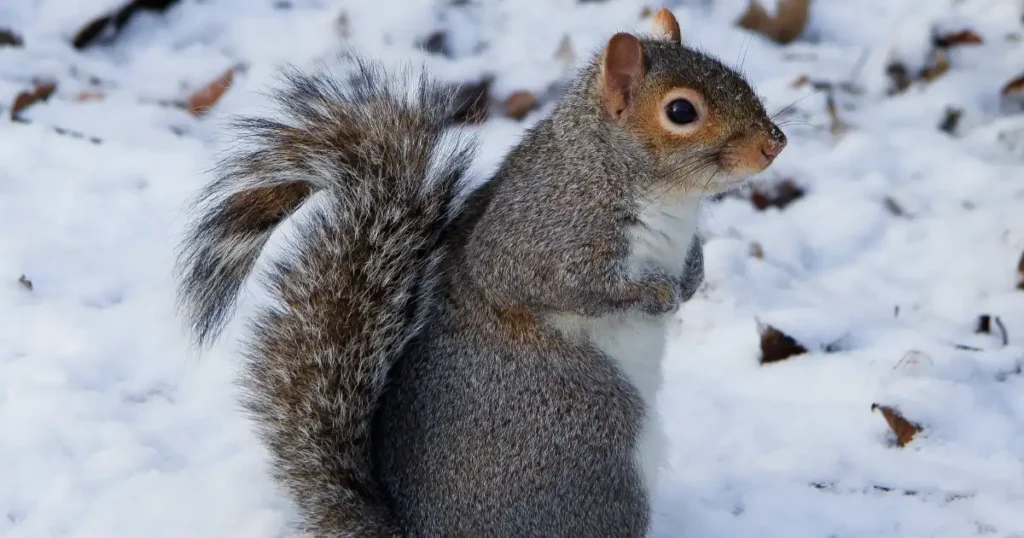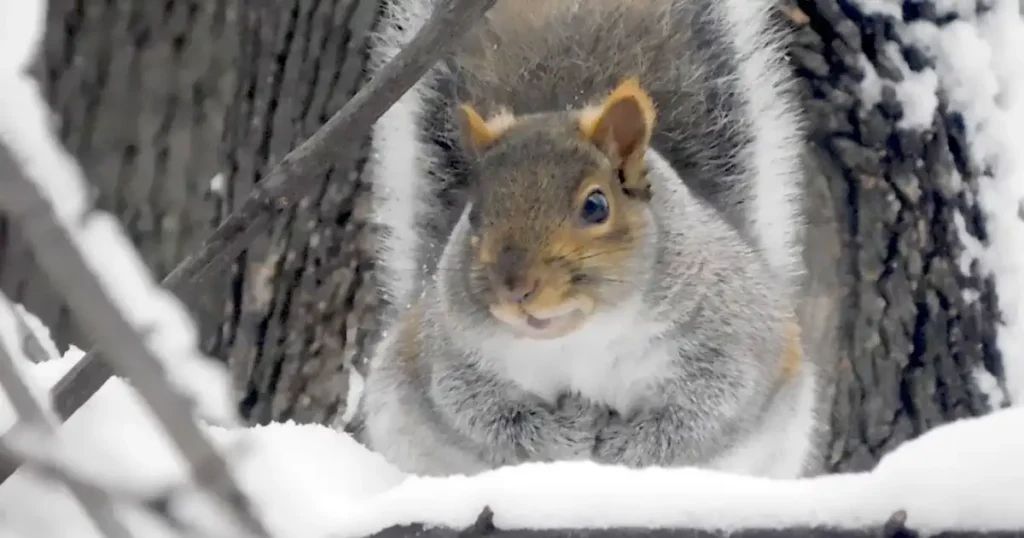
Squirrels are some of the most adaptable and resourceful creatures in the animal kingdom. Their ability to survive in a range of temperatures and environments is fascinating and worth exploring.
Understanding how squirrels manage to thrive in various climates can offer insights into their behavior, physiology, and the importance of their conservation.
Moreover, these insights can also aid in developing strategies for humane wildlife management, ensuring that human-squirrel interactions are safe and sustainable. With changing global climates and increasing urbanization, it's crucial to appreciate the resilience of squirrels and support efforts to maintain their habitats and populations.

To fully grasp how squirrels manage to survive in various temperatures, it's essential to understand their biology. There are over 200 species of squirrels, categorized into tree squirrels, ground squirrels, and flying squirrels. Each type has unique adaptations tailored to their environment.
Tree squirrels, such as the Eastern Gray Squirrel, are perhaps the most familiar. They are commonly found in forests, suburban areas, and urban parks. Their agility and ability to climb trees help them escape predators and find food.
Ground squirrels, like the Arctic Ground Squirrel, live in burrows underground. They are adept at surviving harsh winters through hibernation and have a different set of survival strategies compared to tree squirrels.
Flying squirrels, although not truly capable of flight, can glide between trees using a membrane called the patagium. This ability helps them find food and escape predators.

Squirrels are versatile creatures found in diverse habitats, ranging from dense forests to urban areas. Each species has specific climate preferences that influence their distribution.
Forests provide ample food sources and shelter, making them ideal habitats for many squirrel species. The dense canopy offers protection from predators and harsh weather.
Urban environments present both challenges and opportunities for squirrels. While there is an abundance of food, these areas also pose risks like traffic and human interference. If squirrels are causing trouble in your home or yard, consider calling Critter Stop. They specialize in humane removal and can ensure the squirrels are safely relocated.
Some squirrel species are adapted to live in arid regions. These squirrels have evolved unique behaviors and physical traits to conserve water and stay cool.

Squirrels exhibit remarkable resilience to temperature variations, but their survival strategies vary significantly between species.
Squirrels can withstand temperatures well below freezing. For example, the Arctic Ground Squirrel can survive temperatures as low as -40°F. They achieve this through hibernation and physiological adaptations that prevent their bodily fluids from freezing.
Squirrels can also survive in hot climates. Species like the Antelope Ground Squirrel are adapted to desert environments where temperatures can soar above 100°F. They avoid the midday heat by being active during the cooler parts of the day and seeking shade.

Squirrels have developed several adaptations to survive cold weather, ensuring they can endure harsh winters.
Fur Density and Structure
Squirrels grow thicker fur in preparation for winter. This fur provides excellent insulation, trapping heat close to their bodies.
Fat Reserves
In the fall, squirrels accumulate fat reserves by eating high-calorie foods. These reserves provide energy and insulation during the winter months.
Hibernation and Torpor
Certain squirrel species, like the Arctic Ground Squirrel, hibernate during the winter. Hibernation involves a significant drop in body temperature and metabolic rate, conserving energy. Other species enter a state of torpor, a lighter form of hibernation that allows them to wake more easily if needed.
Nest Building and Sheltering
Tree squirrels build dreys, which are nests made of leaves, twigs, and moss. These nests are insulated to keep them warm. Ground squirrels burrow underground, where temperatures are more stable.
Surviving hot weather requires a different set of adaptations, focused on avoiding overheating and staying hydrated.
Heat Dissipation Mechanisms
Squirrels have fewer sweat glands, so they rely on other methods to cool down. For instance, they spread their bodies on cool surfaces to dissipate heat through conduction.
Activity Patterns
To avoid the hottest parts of the day, squirrels adjust their activity patterns. They are most active during the early morning and late evening, when temperatures are cooler.
Hydration Strategies
Squirrels increase their water intake during hot weather. They also eat foods with high water content, such as fruits and vegetables, to stay hydrated.
Squirrels exhibit distinct seasonal behaviors to cope with changing temperatures and food availability.
In the fall, squirrels are busy gathering and storing food. They hide nuts and seeds in various locations, a behavior known as caching, to ensure they have enough food during the winter.
During winter, squirrels reduce their activity levels to conserve energy. Those that do not hibernate or enter torpor rely on their stored food and fat reserves to survive.
With the arrival of spring, squirrels become more active. They breed, raise their young, and forage for fresh food. Summer is a time of abundance, allowing squirrels to replenish their energy reserves.
Extreme weather can challenge even the most resilient squirrels. Both unusually cold winters and extremely hot summers pose survival risks.
Severe winters can strain squirrels' resources. Prolonged cold spells may deplete their fat reserves faster than anticipated. However, their ability to hibernate or enter torpor helps them conserve energy during such times.
Extreme heat can lead to dehydration and heat stress. Squirrels must find ways to stay cool and hydrated, such as seeking shade and increasing their water intake.
Squirrels employ various strategies to ensure their survival, particularly during harsh weather conditions.
Caching is a critical survival strategy. Squirrels store food in multiple locations to ensure a steady supply throughout the winter. This behavior helps them survive when food is scarce.
While squirrels are generally solitary, some species exhibit social behaviors that enhance survival. Ground squirrels, for example, may share burrows during the winter, huddling together for warmth.
Human environments present unique challenges and opportunities for squirrels. Urban and suburban areas provide abundant food sources but also pose risks.
Squirrels have adapted well to urban environments. They often rely on bird feeders, garbage bins, and other human-provided food sources. Urban trees and structures provide nesting sites and shelter.
If you're dealing with squirrels in your home or garden, contact Critter Stop for professional, humane removal. They are experts in safely relocating squirrels and ensuring they don't return.
In regions with harsh winters, such as Canada and Alaska, squirrels like the Arctic Ground Squirrel have developed robust hibernation strategies and thicker fur to endure the cold.
Eastern Gray Squirrels thrive in the moderate climates of North America. They experience distinct seasonal changes but not extreme temperatures, allowing them to remain active year-round.
In tropical regions, squirrels like the Malabar Giant Squirrel are adapted to hot, humid environments. They have shorter, thinner fur and are skilled climbers, allowing them to stay cool in the tree canopy.
Several myths surround squirrel survival, often leading to misconceptions.
Not all squirrels hibernate. While some species enter a state of hibernation or torpor, others remain active throughout the year, relying on stored food and insulated nests.
While squirrels can eat human food, it does not provide the necessary nutrients for their long-term health. They need a balanced diet that includes nuts, seeds, fruits, and insects.
Urbanization, climate change, and the destruction of habitat all have an impact on squirrel populations. Conservation efforts focus on preserving natural habitats and promoting coexistence between humans and wildlife.
Some squirrel species are under threat due to habitat loss and environmental changes. Efforts to conserve these species include habitat restoration and protection measures.
Humans can support squirrel conservation by providing natural food sources, protecting habitats, and avoiding the use of pesticides and other harmful chemicals.
How do squirrels stay warm in the winter?
Squirrels stay warm by growing thicker fur, accumulating fat reserves, and building insulated nests. Some species also hibernate or enter torpor to conserve energy.
Can squirrels survive in deserts?
Yes, some species, like the Antelope Ground Squirrel, are adapted to desert environments. They have behavioral adaptations to avoid heat and strategies to stay hydrated.
Can squirrels freeze to death?
Yes, squirrels can freeze to death if exposed to extremely cold temperatures without adequate shelter or food. Despite their adaptations like thicker fur and stored fat, prolonged exposure to severe cold can be fatal.
What is the lowest temperature a squirrel can survive?
Squirrels can survive temperatures as low as -40°F, especially those adapted to Arctic environments. Their thick fur and hibernation behaviors help them endure such extreme cold.
Do squirrels need human help to survive extreme weather?
While squirrels are highly adaptable, human intervention can sometimes be beneficial, especially in urban areas. Providing food and water during extreme weather can help them survive.
How do baby squirrels survive harsh climates?
Baby squirrels rely heavily on their mothers for warmth and food. Mothers build well-insulated nests and ensure their young are protected from extreme temperatures.
What temperature is too cold for squirrels?
Temperatures below 30°F can be risky for squirrels, especially if they lack proper shelter or food reserves. While some species can endure lower temperatures through hibernation, others may struggle with prolonged cold exposure.
How cold is too cold for squirrels?
For most squirrel species, temperatures below 20°F are too cold. Extended exposure to such cold can overwhelm their natural defenses, leading to hypothermia and freezing. Human intervention, like providing insulated nests or food, can help urban squirrels survive extreme cold.
Squirrels, known for their resourcefulness and adaptability, can sometimes become a nuisance when they invade properties. Whether they are raiding bird feeders, nesting in attics, or causing damage to gardens and homes, dealing with squirrel infestations requires a humane and effective approach.
If squirrels are causing problems, such as damaging property or creating noise in your attic, there are humane ways to address the issue.
At Critter Stop, we have provided our squirrel removal services for years in the North Texas area, helping customers protect their families, pets, and properties from squirrel-related damages.
Contact us at (214) 234-2616 to get a free estimate of our services.
Visit our Critter Library and learn more about our furry friends